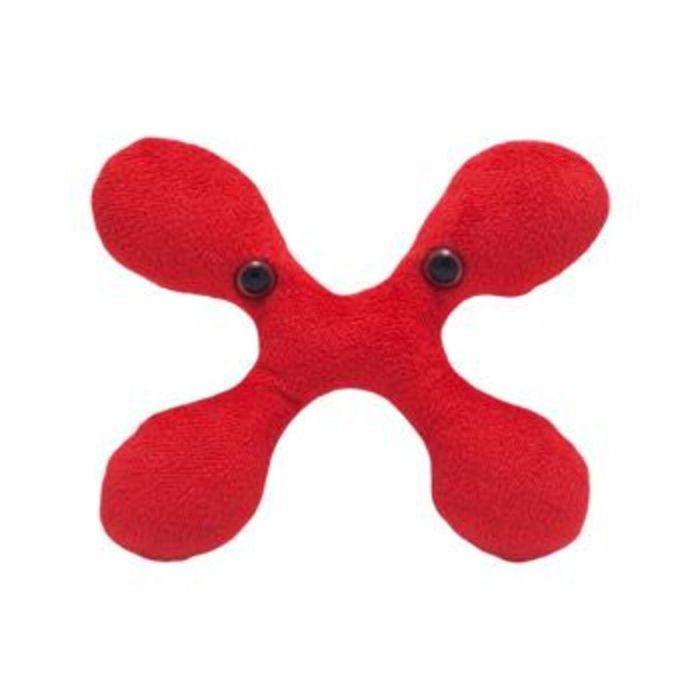Babesia (Babesia microti)
Out of Stock
Product Details
Additional Information
| Sizes | Giantmicrobes are based on actual microbes, cells, organisms and other critters, only 1,000,000 times actual size! Gigantic (GG) 40-60cm XL (XL) 25-38cm Original (PD) 12-20cm Minis (MM) 5-10cm each Keychain (KC) 5-10cm with clip |
|---|---|
| Materials | Plush from all new materials. Stuffed with polyester fiber fill. Surface washable: sponge with water & soap, air dry. |
| Packaging | Each plush microbe includes a printed card with fun, educational and fascinating facts about the actual microbe or cell. |
| Safety | Every product meets or exceeds U.S. and European standards for safety. For ages 3 and up. |
All about Babesia (Babesia microti)
FACTS: Babesia are the protozoan parasites responsible for causing babesiosis. While babesiosis has been recognized for centuries as an illness found in livestock (it is also know as Texas cattle fever), the causative agent was not identified until 1888 by a Romanian scientist named Victor Babes, after whom it was named.
Typically found in domesticated animals, there are more than 100 species of babesia, and a few have been found to afflict humans, in whom it can produce malaria-like symptoms such as fevers, chills, and headaches. In fact, because babesiosis is very rare, it is often misdiagnosed as malaria. (The first human case was observed in a Croatian herdsman in 1957 who is presumed to have contracted it from one of his animals.)
Commonly spread by the deer tick Ixodes scapularis (which also spreads Lyme disease), Babesia protozoa utilize mammalian red blood cells as a habitat for certain stages of their reproductive process. After Babesia sporozoites are introduced into the blood stream, they penetrate red blood cells and proceed to develop rapidly into merozoites forming a distinctive X shape that resembles a Maltese-cross. As the number of merozoites increases, eventually the cells’ walls are compromised and the merozoites explode into the blood and search for new red blood cells to invade.
Fortunately, treatments are available for both animal and human patients. But avoiding tick-infested areas is the best way to avoid a babesian stampede.
| Name | This parasite got its name from the Romanian physician who discovered the genus, Victor Babes. Dr. Babes (1854-1926) made many significant contributions to the study of infectious diseases in his time. |
|---|
| Where It Lives | B. microti is a zoonotic parasite that causes infections in humans and other mammals. Zoonotic parasites are known to be spread from animals to humans to cause diseases. In the case of, B. microti the parasite reproduces in the deer tick, migrates to the salivary glands, and is transmitted to humans and mammals during the tick’s blood meal. Babesiosis has also been linked with blood transfusions due to the parasite’s persistence in human red blood cells. |
|---|
| Symptoms | The parasite finds its way into the (human) host red blood cells, causing malaria-like symptoms (fever, chills, sweating, and muscle weakness). The onset of symptoms can ranges from one week to several months. |
|---|
| Cure | Treated with anti-parasitic drugs and antibiotics. |
|---|
| History |
1957: First case reported in the U.S. found in the New England area, near Nantucket and Martha’s Vineyard. Big Outbreaks: 1975-1986: 216 cases of babesiosis reported worldwide, 200 of which originated in the United States. Recent Outbreaks: 2001: 560 cases of babesiosis reported in New York State, alone. 2009: The most recent report of transfusion-related babeosis fatality. |
|---|
| Fascinating Facts | This kind of infection is particularly harmful to people who have had their spleens removed, have underlying immunocompromising diseases, and the elderly. It’s commonly found co-infectious with lyme disease, caused by Borrelia burdorferi. |
|---|





